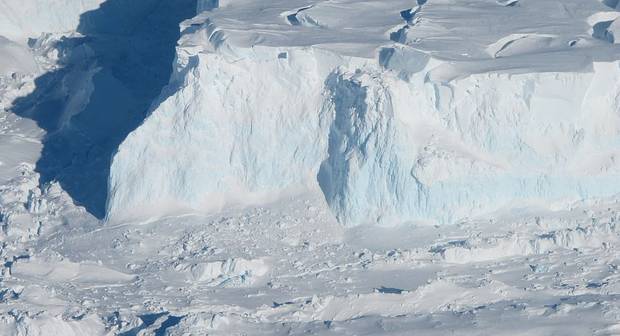A gigantic cavity two-thirds the area of Manhattan and almost 300 metres tall has been found at the bottom of Thwaites Glacier in Antarctica.
About the size of Florida, the glacier is responsible for approximately 4 per cent of global sea level rise.
It holds enough ice to raise the world oceans a little over 65cm and backstops neighbouring glaciers that would raise sea levels an additional 2.4 metres if all the ice were lost, according to the Daily Mail.
The enormous cavern once held 14 billion tonnes of ice. But, in the course of just three years, it has melted and flowed into the Southern Ocean.
According to a study by NASA, the void was caused by newly discovered “fingers” of warm water flowing into cracks in the glacier caused by mounting climate change. This water then pooled between the ice and rock, eroding away the glacier above.
“As more heat and water get under the glacier, it melts faster,” study lead author and NASA scientist Pietro Milillo said.
And the subsurface ice erosion has disturbing implications.
Not only is more ice melting than previously detected, it shows the 160km wide Thwaites Glacier is not as firmly fixed to the surface of the Antarctic continent as believed.
This means the mass of ice — about the size of Florida — can break up and slip into the sea, much faster than projected.
Worse, Thwaites Glacier acts as a kind of “door stop”, preventing adjoining glaciers from sliding towards the sea.





























